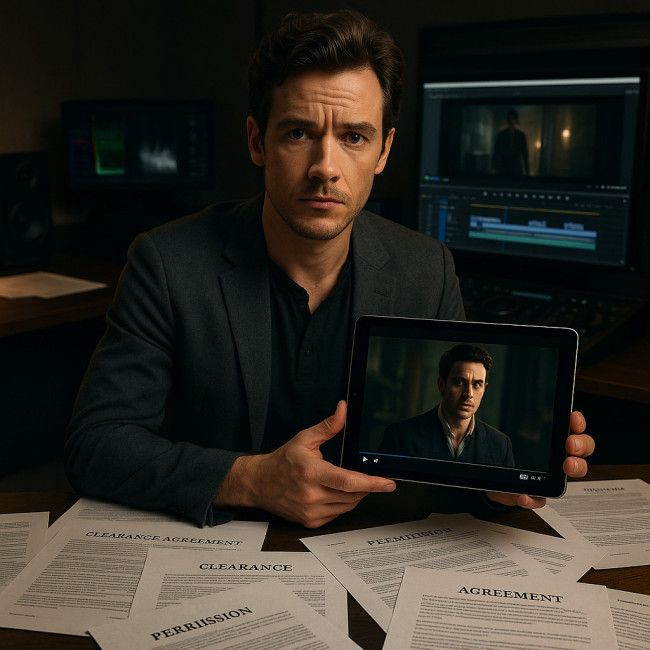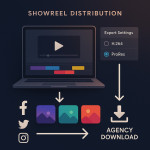Consent checklist: legal steps before posting scene clips on your portfolio
Before you upload that gripping monologue or action sequence to your online reel, make sure every frame is legally watertight. This consent checklist walks you through the essential rights, paperwork and union rules you must secure so your portfolio attracts casting directors—without triggering takedown notices or lawsuits.
Why consent matters for on-screen work

Scene clips combine multiple layers of intellectual property—script, performance, soundtrack, costumes and set design. If even one rightsholder objects, your showcase can disappear overnight. Worse, a breach may jeopardise future collaborations. Treat permissions as professional currency: respecting them builds trust and keeps your acting page SEO gains intact.
The essential consent checklist
1. Confirm underlying copyright ownership
Determine who owns the final cut. Independent shorts often grant ownership to producers, while student films may split rights. Ask for the “chain of title” document to identify every rightsholder before requesting clearance.
2. Review performer agreements and NDAs
Your contract might limit portfolio use to specific durations or require prior approval. Highlight any clauses on confidentiality, festival embargoes or revenue sharing. If language is vague, request a short addendum that explicitly allows portfolio hosting.
3. Obtain written clearance from producers
Email approval is legally acceptable if it shows intent, but a signed licence template is safer. Include: project title, clip length, platforms (website, social, directories), territory (worldwide) and revocation terms. A concise template appears later in this article.
4. Verify music and third-party rights
Background tracks, stock footage and branded props carry their own licences. Ask the editor for a cue sheet and confirm each asset allows “promotional use by talent.” Substitute royalty-free music when rights are unclear.
5. Respect union and non-union rules
Unions like SAG-AFTRA or Equity impose additional conditions. The table below compares common requirements.
| Aspect | SAG-AFTRA Projects | Non-Union Projects |
|---|---|---|
| Written consent needed? | Always, via performer release Rider G | Strongly advised but not mandatory |
| Maximum clip length | Up to 3 minutes or 10% of total run time | No fixed limit—respect producer stipulation |
| Festival embargo override | Requires producer waiver | Depends on festival contract |
| Revocation period | 30 days notice standard | Negotiable |
6. Check distributor and festival embargoes
Sales agents and top-tier festivals often forbid online clips until a premiere window closes. Always cross-reference festival agreements before pressing “publish.”
7. Credit everyone correctly
Miscredited roles can breach moral rights. Include director, writer, producer and your character name in your caption—great for search, too.
Step-by-step process to secure permissions
- List each clip you intend to use with timecodes.
- Email the producer a concise request: purpose, platforms, clip length.
- Attach a licence template (see below) to streamline sign-off.
- Follow up weekly until you receive a signed PDF or verifiable email consent.
- Archive consents in a cloud folder linked to your portfolio CMS.
- Add captions noting “Used with permission”.
- Schedule annual reviews to renew expiring licences.
Template language that speeds up approvals
Copy, adapt and paste into your next clearance email:
“I, [Producer Name], as the authorised representative of [Production Company], hereby grant [Your Name] a non-exclusive, worldwide, royalty-free licence to host and display up to three minutes of footage from [Project Title] for portfolio and professional promotion across personal website, industry directories and social media channels. This licence may be revoked with 30 days written notice.”
Risk scenarios to avoid
- Using watermarked festival screeners—identifiable marks breach confidential viewing terms.
- Including audition self-tapes if the casting breakdown was under NDA.
- Uploading group scenes where minors appear without guardian consent.
- Sharing clips containing copyrighted songs without sync clearance.
Real-world consent stats
Below, see how often actors secure written clearance before publishing, according to a 2024 survey of 300 performers.
Source : Screenrights Survey 2024
Are your clips legally portfolio-ready?
Next steps after clearance
Once your paperwork is filed, optimise the viewing experience. Tighten your cut with the showreel flow editing technique, then monitor visitor data via an analytics-first mindset. Hosting your clips on new acting portfolios designed for fast loading further boosts discovery.
Call to action
Ready to post with confidence? Download our free clearance tracker and start securing permissions today. Your future collaborators will thank you—and so will your inbox.
FAQ
- Can I post behind-the-scenes photos without consent?
- Only if everyone visible has signed a release and the producer has no confidentiality clause covering set images.
- What if the producer never replies?
- Silence is not approval. Wait, escalate politely, or choose another clip.
- Do TikTok snippets need the same paperwork?
- Yes. Platform size does not change copyright law.
- How long should I keep consent records?
- Indefinitely. Cloud backups ensure proof if questions arise years later.











